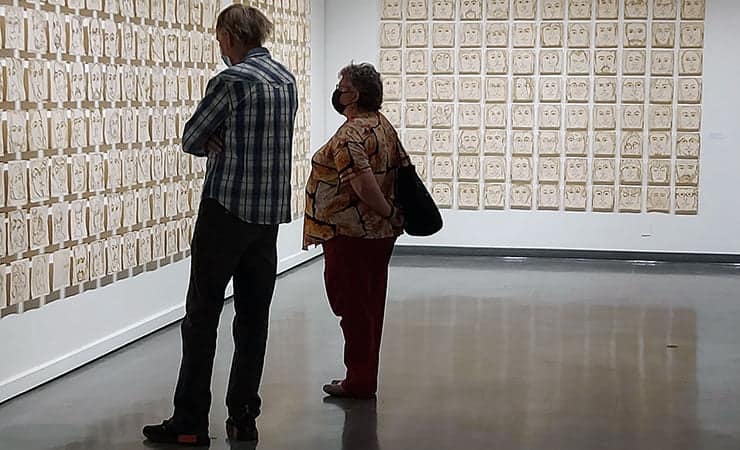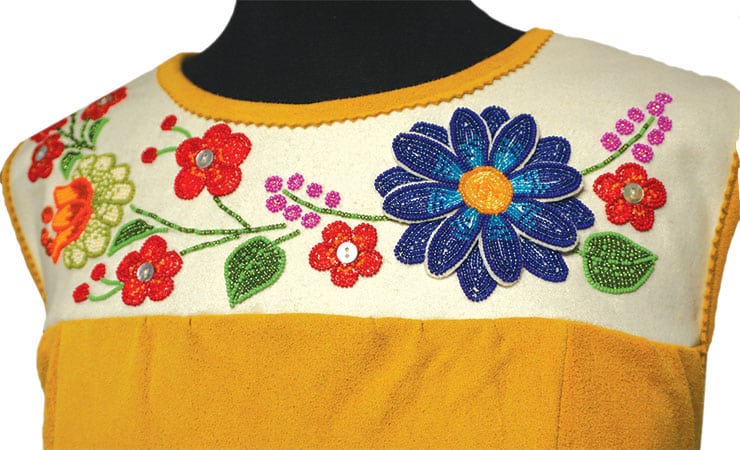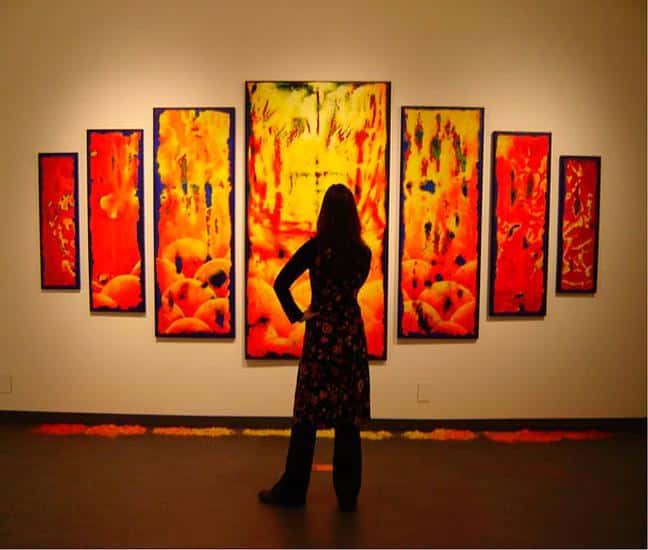“Book for a Public Library” by Ian Carr-Harris
“Drawing is similar to writing.”
Those words are printed in bold black letters upon a stark white wall in the Yukon Arts Centre Public Gallery. And while the sentence is simple, over a dozen works of art in the latest exhibit lead visitors far beyond minimalism.
The YAC dug into its own collection for the last show, and now the majority of the walls accommodate works from the permanent collection of Musée d’art contemporain de Montréal.
De l’écriture [With Writing] brings together pieces created by some of the most-influential contemporary artists in North America and the world, to explore the connections between literary elements and visual art.
“It’s pretty broad in what is considered with writing. Be it collage, or does it have a bit of newspaper in it, or is it a painting that has gesture that almost could be writing, or bits of calligraphy, signs, sculpture, video,” explains YAC gallery director Mary Bradshaw.
“It’s quite cool that they kept their minds really open when they were deciding what could constitute writing in art.”
The majority of the works in De l’écriture are two-dimensional, but the distinct sound of someone writing on a chalkboard echoes through the gallery from behind a partition wall. It’s part of Manon de Pauw’s 2001 single-channel video, Corps pedagogique [Teaching Body].
The six-minute video shows the Quebec artist as she delivers a lesson on the definition of performance art. With sharp cuts and a simple classroom setting, the piece incorporates writing and communication with a slice of humour.
Bradshaw admits while the overall theme of the show is undeniably writing, many of the pieces ultimately deal with the power of communication – and art is seen as another means of communication.
The exhibit was originally shown at the Musée in 2007 and combined a total of 50 different artists’ works created between 1965 and 2005. A total of 15 works are on display in the YAC gallery.
“The nicest thing about working with the Musée is that every time they do the shows, they’ll tailor it to where it’s going,” Bradshaw says. “We got to have a lot of input on what pieces we wanted and what we thought.”
She adds that one of the most exciting parts of bringing De l’écriture to Whitehorse was the opportunity to display some high-profile artists.
“The insurance level on this exhibit … is somewhat scary,” she says with a laugh.
“We’re looking at major works by some pretty important Canadian and foreign artists and that they all can use the writing, can use text in completely different ways, but it can filter through their art form.”
Perhaps the most-identifiable and iconic piece in the exhibit is one by American conceptual artist, Barbara Kruger. Untitled (We Are Not Made For You) is a striking black-and-white photomontage, juxtaposing text with found images. It demonstrates Kruger’s recognizable use of collage, while blatantly commenting on and criticizing sexism.
The large-scale image showcases an evident use of writing within visual art. However, other works in De l’écriture venture further away from the obvious.
American artist Dennis Oppenheim’s work, Two Stage Transfer Drawing, incorporates a sense of writing on a unique level. In the 1971 piece, Oppenheim and his son are shown in photographs. One stands in front of the other and while lines are drawn on one’s back, the other attempts to match the movements on a piece of paper.
Czech Republic artist Jana Sterbak’s Untitled (For Terry Last) sits surrounded by two-dimensional works. The emotionally charged sculpture is displayed under glass – a Mont Blanc fountain pen, a notebook and a crumpled piece of tissue. Scrawled across the notebook pages is a man’s signature, and in the pen is his HIV-positive blood, which was also blotted onto the tissue.
Each piece in De l’écriture is accompanied by a thorough description of the artist and their work. And while such a range of disciplines and creators could be seen as intimidating to some gallery goers, Bradshaw says the exhibit truly deals with what we are all familiar with.
“We had a co-ordinator from the Musée here and, when there were school tours coming through, she was asking them, ‘What is the most important thing for life?’ And the answer was reading and writing. Because it’s going to open so many doors and there are many things you can’t do without it.”
De l’écriture [With Writing] is on display at the Yukon Arts Centre Public Gallery until March 15.



